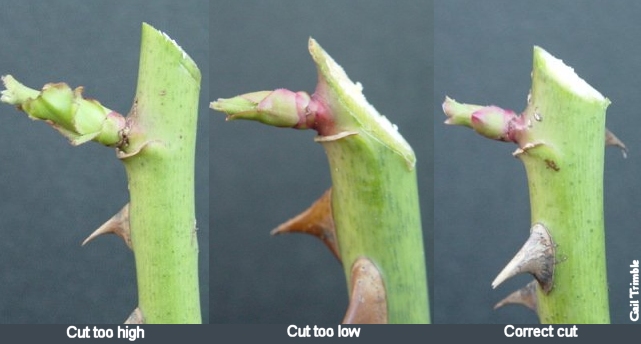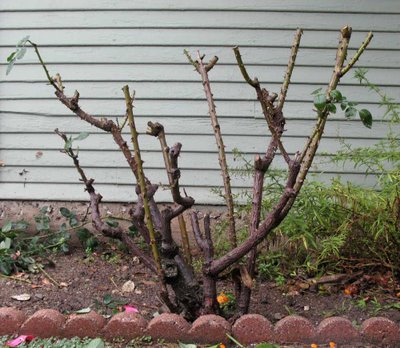
The following is a guide to help you get the most from your roses. While it seems like a lot of work, the rewards from the masses of flowers are well worth the effort.
While the below is a description of best practices, at the very minimum, you just need to remember: Water, Feed, Spray, Prune and repeat.
Autumn (April to June).
The season is almost over although warmer areas will be enjoying the last flush of flowers, especially those long-lasting floribundas such as 'Iceberg'. It is still too early to properly prune your roses but the following is some helpful hints to get them ready.
You should stop 'deadheading' roses now and let them develop hips (the round seed heads that form after the flower falls off). If the hips are left, the plant will take up potash which is necessary for producing sturdy canes but pruning at this time of year will encourage the uptake of nitrogen, resulting in soft spring growth.
It is a good idea to spray with Copper oxychloride as it will help harden the leaves and force them to drop. It is a good idea to pick these leaves up and burn or dispose of them in your rubbish collection. This helps prevent spreading any diseases etc. It would be beneficial to spray two or three times at fortnightly intervals. You should also keep up your spray program with products such as Super Shield or another suitable rose spray.
If Downy mildew (leaves have purple or black marks and fall off) has been a problem you can add a tablespoon of potash around each plant. Or use the recipe below.
It is also a good time to add Dolomite Lime to the rose bed. This stabilises the pH level which will improve the uptake of fertilisers and encourage good root growth. You only need a sprinkling per plant.
An organic approach to powdery mildew:
1 tbsp baking soda
1 tbsp sticking agent such as Spray Stick.
1 tbsp canola oil
1-2 drops lemon juice or vinegar.
Mix together, shake and add 5 litres of spray. Make a new batch each time.
Winter (July to September).
This is the time for pruning and general clean up of your roses. Once you have pruned it is a good time to spray with Copper again. This will help protect the roses over winter from fungal diseases and will help protect the new spring growth. Using an all-purpose spraying oil will deal with any insects that may pose a problem such as scale or red mites.
Remember to collect all the fallen leaves and dispose of them to prevent spreading diseases.
Pruning:
One of the first tips is to cut out all the dead, dying and diseased wood. The next thing to look at is removing some of the central canes. In particular, anything that is crossing over others or big old woody canes. You are aiming to open up the plant but don't prune too much out as every cane you keep means more flowers. The cut is important here, cut above a bud (or eye), angle at 45 degrees and finish the cut just above the bud. If the cut is too high or too low it will cause dieback.


Energy is stored in the canes so don't prune too hard. Hybrid tea roses should be pruned to around 75cm to 1m. Floribundas can be pruned more lightly seeing they are prolific flowerers. Standards, however, are pruned shorter as otherwise they become top heavy and be damaged by wind.
Spring and Summer (September to March).
The first leaves of the season are delicate and can be susceptible to infection due to the warm and wet weather of spring. Once the buds start to open, apply Super Shield or any other rose spray. These are good sprays for general use and protect against a range of pests and diseases.
Downy mildew can also be a problem in spring and autumn and appears as purple blotches on the upper leaf surface and a mildew appearance on the underside of the leaf. This can be prevalent in cool moist conditions and good air circulation will help. You can use Bravo or Fungus Fighter in combination with your general rose spray or you can use the organic option above.
Early spring is the perfect time to apply a good slow-release fertiliser. Applied at the recommended rates most products should take you through the rest of the season. You can still apply liquid and/ or powder fertilisers to give you bigger and healthy flowers.
Regular deadheading will encourage more flower buds to develop. When picking flowers or de-heading you should prune back to where the stem has five leaves. Apparently, this is where the plant will flower from. Roses tend to flower in a six-week cycle.
The other important thing over spring and summer is to give them plenty of water. Roses enjoy a good deep soaking two to three times per week.